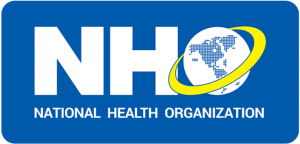Rapid advancements in high-speed connectivity are reshaping how we perceive and utilize our urban landscapes. As cities continue to evolve into interconnected ecosystems, the role of robust IT infrastructure becomes increasingly crucial. This metamorphosis not only enhances everyday life for individuals but also paves the way for innovative applications that promise efficiency and sustainability.
With a growing reliance on cloud networking, the capacity to transmit and process information will reach unprecedented heights. This transition is setting the stage for unique opportunities in collaboration, resource management, and overall functionality of urban environments. It is essential to recognize that these developments are not merely technical improvements but fundamental shifts that will redefine our interactions within populated areas.
Integrating 5G Technology for Enhanced Connectivity in Urban Environments
5G technology represents a significant leap forward in enhancing connectivity within urban settings. By leveraging cloud networking, cities can achieve unprecedented levels of interoperability and efficiency in their communication systems. This improvement facilitates seamless integration of various applications, providing real-time data exchanges and fostering innovation across multiple sectors.
One of the key advantages of implementing 5G is its ability to support high-speed connectivity for a multitude of connected devices. This is particularly crucial in densely populated areas where traditional IT infrastructure may struggle to meet growing demands. The architecture of 5G allows for reduced latency and increased bandwidth, ensuring that critical services remain reliable even during peak usage.
Moreover, urban environments can significantly benefit from the low energy consumption associated with 5G networks. This attribute not only minimizes the operational costs for municipalities but also contributes to the sustainability goals that many cities are striving to achieve. As cities evolve into smart ecosystems, the integration of 5G opens up endless possibilities for enhancing overall quality of life.
In conclusion, the adoption of 5G technology is paramount in reshaping urban connectivity. By supporting advanced applications and improving the existing IT infrastructure, urban planners can create more resilient and responsive environments that cater to the needs of their citizens.
Optimizing IoT Data Flow: Strategies for High-Volume Transmission
Efficient management of Internet of Things (IoT) information streams is crucial for achieving effective high-speed connectivity across various platforms. As urban areas evolve, the demand for rapid and reliable communication increases, necessitating innovative approaches to handle substantial data collection and processing.
One key strategy is implementing edge computing, which involves processing information near the source rather than relying solely on centralized systems. This reduces latency and optimizes bandwidth usage, allowing for smoother interactions and quicker responses in real-time applications.
Another effective method is leveraging cloud networking solutions. Distributing workloads across multiple cloud services ensures scalability and resilience, enabling seamless handling of varying data loads. By utilizing cloud architectures, organizations can enhance their capacity to analyze and act upon large volumes of information efficiently.
Moreover, adopting advanced compression techniques can significantly minimize the size of data packets transmitted. By using algorithms to reduce the bandwidth requirements while maintaining data integrity, organizations can maximize performance during peak traffic periods.
Lastly, the integration of artificial intelligence for predictive analytics can streamline the flow of incoming data. By anticipating trends and traffic patterns, systems can adjust resources dynamically, ensuring optimal performance and reduced congestion across the communication landscape.
Securing Data Transmission: Best Practices for Smart Infrastructure Networks
As urban environments increasingly rely on advanced systems for optimal functionality, ensuring the safety of information movement becomes vital. Protecting against cyber threats is essential for maintaining the integrity of operations within interconnected frameworks.
One of the best practices involves implementing robust encryption methods. Utilizing strong encryption algorithms safeguards transmitted information, making it less susceptible to interception. When dealing with cloud networking solutions, this level of protection is indispensable to prevent unauthorized access.
Another critical measure is the adoption of multi-factor authentication. By requiring users to provide multiple forms of identification, organizations can substantially reduce the risk of breaches. This approach adds an extra layer of security that is particularly crucial in environments characterized by high-speed connectivity and numerous access points.
Regular security audits and vulnerability assessments play a vital role in maintaining the robustness of these systems. Through continuous monitoring and evaluation, potential weaknesses can be identified and addressed promptly, ensuring that the entire framework remains resilient against potential attacks.
Moreover, employing segmentation techniques can mitigate risks by isolating different components of the architecture. This limits the potential damage from any single compromised area, thus protecting critical functionalities from cascading failures.
Lastly, fostering awareness among personnel regarding security protocols is paramount. Training programs should emphasize the importance of adherence to best practices, creating a culture of vigilance that actively contributes to safeguarding sensitive information.
For more insights into the importance of secure data transfer in evolving environments, visit https://lamechanicalac.com.


